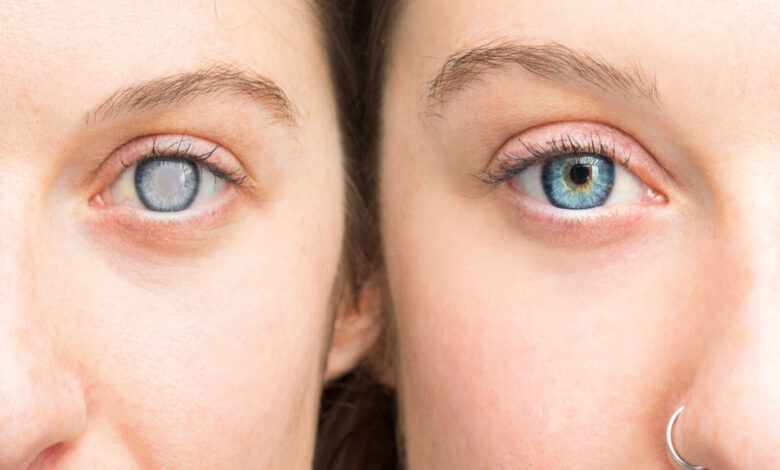Advances in Cataract Surgeries

Cataract surgery is a procedure that eye doctors have practiced for years. Doctors perform surgery to remove patients’ lenses that have cataracts, replacing them with clear synthetic lenses. This eye surgery has evolved over the years and is now one of the safest surgical procedures. Here are a few advancements in cataract surgery:
Minimally Invasive Surgery Techniques
During surgery, doctors cut into the eye to remove the cloudy lens and put in a replacement lens. Earlier, doctors would make large incisions, which took longer to heal, increasing patients’ risk of infection. Doctors use surgical techniques such as phacoemulsification, which allows them to remove the lens through a tiny incision.
Phacoemulsification involves using ultrasound energy to break up the lens affected by cataracts into tiny fragments. Doctors then make a small incision to suction out the lens fragments. The introduction of phacoemulsification significantly reduced surgery recovery times since there was less trauma to the eye and a reduced risk of infection. Phacoemulsification also has a low complication rate and improved visual outcomes.
Laser-assisted Cataract Surgery
The integration of laser technology into surgery has made cataract surgery safer, as doctors can make more precise incisions in the eye. Doctors perform laser-assisted surgery using a femtosecond laser. This laser is helpful in fundamental surgery steps like making an incision in the cornea and softening the cataract-covered lens, reducing the time spent in surgery.
Because laser-assisted surgery improves the accuracy of incision placement, it reduces the need for manual eye manipulation during surgery. Doctors can also use the femtosecond laser to correct astigmatism by reshaping an oddly curved cornea. The femtosecond laser uses less energy than ultrasound to break the lens, reducing the risk of corneal swelling, which can slow recovery.
Enhanced Surgical Visualization
Digital imaging and heads-up display systems have improved surgical visualization during cataract surgery. Eye doctors now use a high-definition 3D visualization display for enhanced depth perception and magnification during surgery. 3D visualization display platforms are designed to minimize light exposure to the patient’s eye while displaying a high-definition visual. Surgeons can increase magnification while maintaining a more comprehensive view, helping them see better during surgery.
Heads-up display systems project real-time images of the surgery on a screen. The display reduces the need for surgeons to constantly switch their gaze between the patient’s eye and the microscope, reducing fatigue during surgery. A better view of the surgical area improves precision and reduces the risk of surgical errors.
Customized Intraocular Lenses (IOLs)
Doctors sometimes use a combination of IOLs and laser-assisted surgery to achieve better visual outcomes. With advances in intraocular lens technology, patients now have more visual correction options after surgery. The choice of IOLs after surgery depends on the patient’s condition.
Traditional multifocal lenses only allowed patients to see at a particular distance, usually long distances. Surgery patients have the option of multifocal lenses, which would enable patients to see short and long distances. Some multifocal lenses also correct intermediate vision, eliminating the need for glasses after cataract surgery. Toric IOLs help correct astigmatism, further enhancing visual clarity. Toric IOLs are available in different strengths depending on the severity of astigmatism in patients.
Improved Measurement Tools
Doctors should measure the eye during surgery to determine the size of the replacement lens. Cataracts can contribute to inaccurate eye size measurements, so doctors should measure eye size again after surgery. Optiwave Refractive Analysis (ORA) technology has made eye size measurements more accurate. Doctors use ORA technology to take refractive eye measurements after removing cataracts, which gives a more precise figure.
Understanding the size and shape of the eye is useful for determining the size and type of IOLs a patient needs after cataract surgery. Accurate eye measurements also facilitate precise lens placement, resulting in better vision after cataract surgery.
Restore Your Vision Today
Cataracts can distort your vision and are a leading cause of age-related blindness worldwide. This eye condition can be challenging to deal with since you might be unable to drive, read, and even see people’s faces from afar. Cataracts are easy to correct through cataract surgery. Advancements in cataract surgery tools and techniques have made the surgery safer and improved post-surgery visual outcomes, restoring patients’ quality of life. Cataracts may worsen with time, so if you have a cataract, see your nearest eye doctor for treatment.



